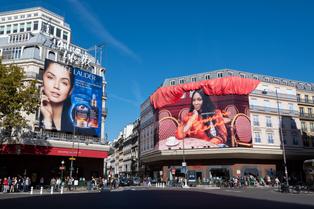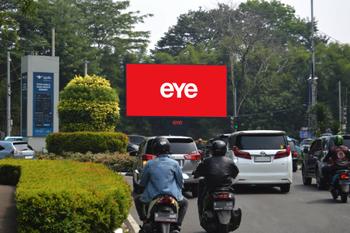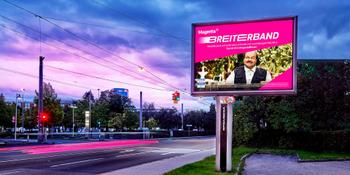In the ever-evolving outdoor advertising industry, static OOH ads remain a steadfast pillar, commanding attention and delivering impactful messages to audiences in the context of their day-to-day lives. As media owners navigate this landscape in 2024, maximizing ad revenue from static billboards and other traditional OOH inventory will be crucial for sustained success.
In this blog, we highlight actionable strategies to grow your static OOH advertising revenue — with insights gathered from OOH media leaders around the globe for our new State of Static OOH report. Read on to uncover innovative approaches to thrive in the static OOH space and propel your business forward.
Understanding today’s static OOH landscape: Insights for media owners
While digital out-of-home (DOOH) has been getting a lot of attention in the last few years, static OOH — which includes traditional billboard advertisements, posters, and other non-digital forms of outdoor advertising — remains the dominant format in this ad space. Unlike their dynamic counterparts, static OOH ads offer unrivalled visibility, 100% share of voice, and long-term exposure, providing a cost-effective and impactful way for brands to reach their target audience.
Despite its enduring appeal, the static OOH advertising market is not without its challenges. In 2024, media owners are grappling with shifting market trends and technological advancements that have led to increased competition from digital alternatives. Unlike DOOH, static media owners still rely on manual-heavy processes to manage their inventory network. And many brand marketers still — mistakenly — believe that static outdoor advertising can’t be measured as a performance channel.
To navigate these challenges and maximize revenue opportunities, today’s static OOH media owners must adopt innovative approaches to enhance operational efficiency, leverage data-driven insights, and tailor their offerings to meet the evolving needs of advertisers. This proactive approach will help static OOH media businesses stay ahead of the curve, capitalize on emerging trends, and stand out in an increasingly competitive advertising market.
4 strategies for increasing traditional OOH ad revenue
Whether you’re looking to amplify existing static OOH revenue or grow your overall/gross outdoor advertising revenue stream, we’ve got you covered with practical insights — backed by the recent feedback of 125+ OOH professionals, with networks based all across the globe.
1. Diversifying OOH inventory
The OOH industry’s embrace of digital technologies is clearly more than a passing phase. That’s why, rather than resisting change, many forward-thinking OOH networks with static inventory are actively integrating digitization into their core strategies. In fact, more than two-thirds of the static OOH media owners we surveyed already classify their current networks as “hybrid,” meaning they offer a mix of static and digital inventory to advertisers.

Moving forward, that number is expected to grow, with nearly 43% of survey respondents saying they plan to invest in the digitization of existing static faces in the next 1-2 years.

That’s not to say that static OOH is going to be replaced anytime soon — especially since static billboards and other traditional outdoor advertising formats can provide advertisers with a competitive edge in this era of digital dominance. According to the survey data from our State of Static OOH report, 70% of OOH media owners with existing inventory digitization plans intend to convert less than a quarter of their existing static faces. Rather than replacing static OOH media, this kind of calculated inventory diversification marks a strategic evolution, opening up new avenues of revenue by expanding the business’s core offerings.
2. Addressing operational inefficiencies
The intricate processes that once defined the creation and deployment of static OOH campaigns are undergoing a transformative shift — and there’s a growing awareness amongst media owners that more efficient workflows are not just desirable but have become a strategic necessity for the continued growth of their business. This perspective is reinforced by the results of our survey, which found that 53% of static out-of-home media owners see operational inefficiencies as one of their organization’s top barriers to future growth.

Automation can help static OOH media owners reduce some of the friction and save time, and a new group of campaign management solutions is making it easier for the growing number of hybrid networks to seamlessly manage their mix of static and digital OOH inventory. But the industry, as a whole, still has a long way to go with regards to implementing these kinds of efficiency-minded solutions; despite an ongoing desire to grow advertising revenue, 37% of the OOH media owners Broadsign surveyed still use spreadsheets or slides to manually manage their static inventory.
In the quest for optimal revenue generation, networks with static OOH inventory must confront the challenges posed by outdated inventory tracking systems, manual proposal processes, and the need for more streamlined methods of providing proof-of-performance (PoP) to advertisers. What’s important now — and moving forward — is for OOH organizations to integrate the tools and processes needed to capitalize on the immediacy and responsiveness that modern audiences, and thus advertisers, have come to expect.
3. Leveraging data-driven decision making
Technological advancements now allow for data-driven content targeting, while the inclusion of interactive elements can further enhance engagement and increase the overall impact of multi-channel ad campaigns. No longer confined to traditional methods, today’s media owners understand that harnessing data-driven solutions is the key to unlocking new revenue. In fact, 40% of the static OOH media owners we surveyed see data and analytics as crucial and believe they will significantly shape the industry moving forward.

Data-driven insights not only inform the optimization of static OOH networks but also facilitate the creation of more targeted and impactful static OOH campaigns — something that will be key to attracting more advertiser investment moving forward. For media owners who want their static OOH business to stand out and scale up, taking the time to invest in the right technology now is sure to pay off in the future — especially considering that nearly 15% of surveyed static OOH media owners don’t currently track audience measurement at all.
As static OOH media owners look to bridge the gap with still-untapped advertisers, implementing modern measurement methods becomes a necessity, ensuring their static OOH businesses thrive and remain resilient in an era where informed decision-making is the cornerstone of success.
4. Partnering with local businesses and events
Partnering with local businesses and events can be a game-changer for static out-of-home (OOH) media owners looking to enhance their advertising revenue. By forging strategic alliances with local businesses, OOH media owners can offer targeted advertising solutions that resonate with the community. The positive impact this kind of outreach could have on your bottom line is reinforced by the results of our survey, which showed that local brand campaigns make up a quarter or more of total ad sales for the majority (53%) of static OOH owners.
Whether it’s placing ads near popular local establishments or customizing campaigns to align with specific neighbourhood demographics, these partnerships can result in higher engagement and better ROI for advertisers — which, in turn, leads to higher demand and better revenue generation opportunities for media owners. Leveraging events and sponsorships can also further amplify the visibility of static OOH media; by associating their displays with well-attended events or becoming sponsors, media owners can capture the attention of a broader audience and attract advertisers seeking to capitalize on the heightened exposure.
By offering targeted advertising opportunities tailored to the interests of the community, static OOH media owners can not only attract more advertisers but also foster long-term partnerships that benefit both parties — unlocking new avenues for revenue generation and further solidifying the power and position of static OOH media in an increasingly digitized advertising ecosystem.
Case studies & static OOH business success stories
Ready to see some of these actionable static OOH revenue generation strategies in action? In this section, we highlight compelling case studies that showcase the accomplishments of OOH media owners and explore the strategies behind their networks’ impressive revenue growth. From innovative campaigns to strategic partnerships, uncover the secrets behind their success in navigating the dynamic landscape of outdoor — and multichannel — advertising.
Summit Outdoor Media: Balancing static and digital inventory for maximum revenue
Throughout its 20-year history, Summit Outdoor Media (formerly Summit Billboard) has been committed to helping brands and advertisers reach audiences offline and outside of their homes. As the outdoor advertising division of Summit Media, which owns and operates various properties throughout the Philippines, Summit Outdoor Media provides customers with ways to reach audiences through a mix of traditional and digital outdoor advertising. Today, its vast inventory is strategically located across environments like roadways, malls, and transit networks and ranges from large-screen LED video billboards to small lamp post banners — making it one of the largest OOH media operators in the region.

Strategies Summit Outdoor Media employed to achieve optimal revenue generation and support the business’s growth include:
- Diversification of OOH inventory: In addition to offering such widespread availability, the company’s entry into the world of digital out-of-home has enabled it to attract new clients thanks to some pretty exciting capabilities, including anonymized data tracking that registers and analyzes audience behaviour within site locations.
- Leveraging data-driven decision-making: To evolve alongside the Philippine outdoor advertising market and scale and transform their offering, Summit Outdoor Media adopted an all-in-one OOH software solution with sophisticated campaign tools designed to help them drive more revenue.
Read the full case study to learn more about Summit Outdoor Media’s business success.
Gawk Outdoor: Successful integration of local partnerships
Gawk Outdoor’s (originally called Regional Billboard Co.) mission is simple: to make out-of-home more available and widespread in their home state of Victoria. Since 2018, Gawk Outdoor has grown into the largest independent outdoor advertising company operating across the southeastern state of Australia, as well as in neighbouring New South Wales. Most of their inventory is static, but their network also has several digital screens; as of September 2022, the number of Gawk Outdoor sites had reached 80 locations across Victoria — a number that was only expected to continue growing in the near future.

Some of the revenue growth strategies Gawk Outdoor used in the course of this impressive network growth include:
- Partnering with local businesses and events: In 2024, the company’s original mission now includes another layer: to make out-of-home available to businesses of all budgets and sizes. Placing regional Victoria at the heart of their efforts, Gawk Outdoor strives to ensure that local businesses have the same advertising opportunities and access to OOH as the international players they serve. In fact, about three-quarters of its clientele are brands and advertisers who are relatively new to outdoor advertising.
- Addressing operational inefficiencies: Gawk Outdoor’s ambitious desire to scale its organization came with the need for more efficient operations. That’s why, after investing in premium fixtures and the best locations in the region, the team turned its attention to software to help make the process of operating an expanding inventory of billboards easier — ultimately adopting dedicated static OOH software to better streamline their workflow, eliminate the risk of human error, and better serve their customers.
Read the full case study to learn more about Gawk Outdoor’s successful expansion.
Get more of the latest industry insights from our State of Static OOH report
Want to learn more about the world of static out-of-home advertising in 2024? Download your full copy of The State of Static OOH industry report.





